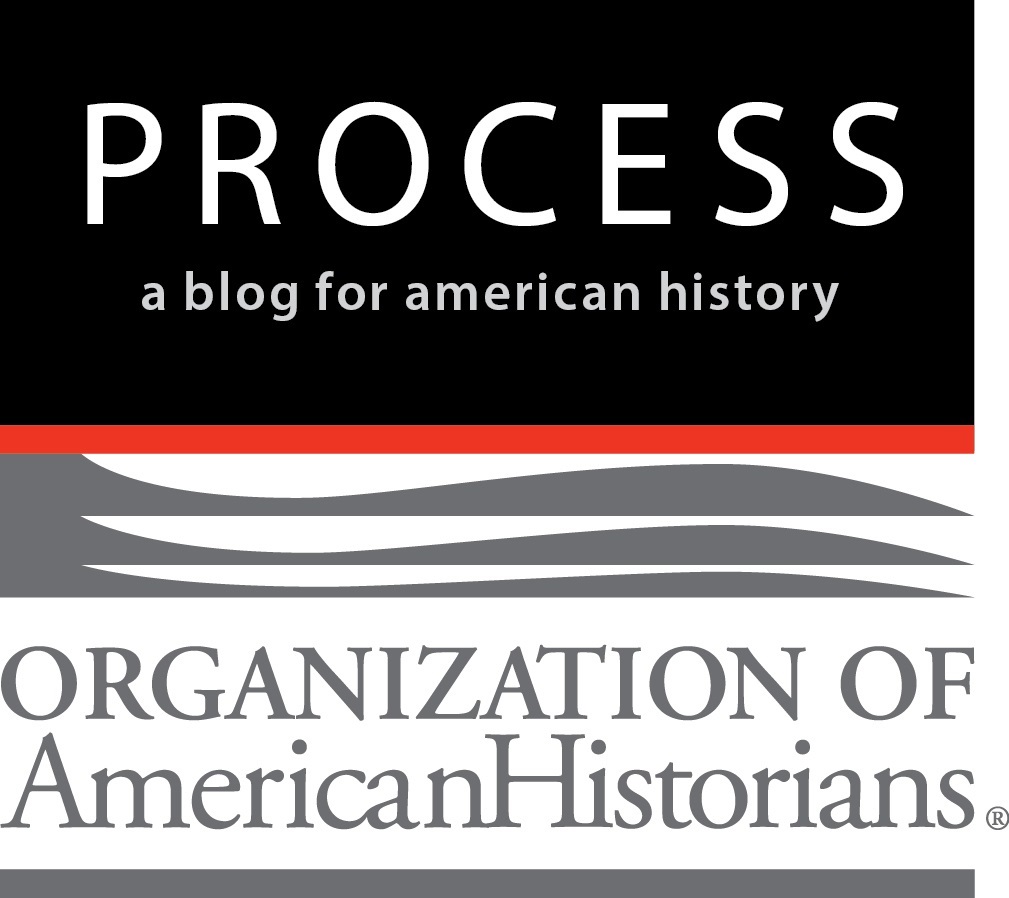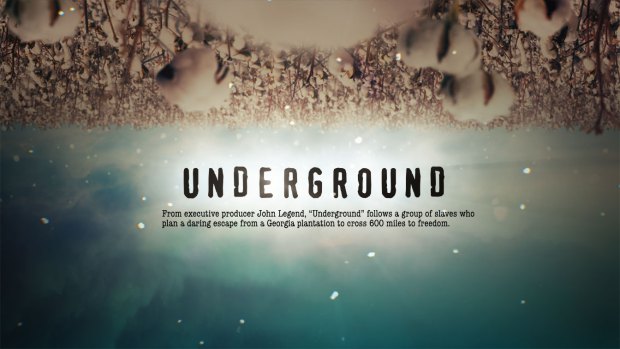UNDERGROUND:
THE MODERN
STORY OF
ENSLAVED
RUNAWAYS
By Daina Berry
Every Wednesday for the past month, Twitter has lit up with comments about the new television hit Underground on WGN America. Thousands of people live tweet, reacting to the drama of a slave escape plot. Viewers discuss the music, the interactions among a complex set of characters, and the history of American slavery. Historians, too, are part of these conversations. Kelli Carter Jackson (@kcarterjackson) tweeted “Who saw #Underground last night?! … Edge of my seat!” while Leslie Harris (@ProfLMH) and other scholars, including Evelyn Brooks Higginbotham, president of the Association for the Study of African American Life and History, went to an early screening at the White House. Harris thanked the actors and producers on Twitter “for bringing our history to life.” Erica Armstrong Dunbar (@EADunbar1) weighed in early on in an earlier OAH Blog.
Underground relays the history of countless people who chose to liberate themselves from enslavement. A real-life example is George, who, at about twenty-six or twenty-seven years old in the spring of 1853, appeared in a lengthy advertisement published in The Macon Telegraph. He had liberated himself from his enslaver and ended up in the hands of the Petersburg, Virginia, sheriff. From this advertisement, we learn he escaped multiple times and was always on the move. George’s story is similar to the Underground character Noah (Aldis Hodge).
Noah serves as one of the ringleaders in an escape plot that involves six other enslaved people. However, Noah ends up leaving earlier than planned when “Rosalee” (Jurnee Smolett-Bell), a house servant and his love interest, nearly killed an overseer for sexually assaulting her. The escape occurs before the group has time to fully execute their plan, but Noah later goes back and brings the others along to join him and Rosalee.
As a scholar of the enslaved and someone who studies slavery, I was not sure if a made-for-television modern story of runaways would fully capture the depth of characters who populated plantations across the South. Just like nineteenth-century enslaved experiences on plantations, this show depicts the diversity and complexity of enslavement. After five episodes, it is clear to me that the producers and actors worked hard to present the institution of slavery through multiple characters and perspectives, including field hands, drivers, blacksmiths, house servants, carpenters, overseers, slave patrollers, black and white abolitionists, as well as the plantation gentry. They also do justice to gender and class distinctions, sometimes with humor, irony, and humiliation. For example, in one episode, Noah sets up Cato (Alano Miller) to be sexually exploited by Mistress Shaw, an aged white woman who regularly hosts plantation dances. She is notorious for selecting an enslaved man for her sexual pleasure. In another scene, a white abolitionist couple, John and Elizabeth Hawkes (Marc Blucas and Jessica De Gouw) get their own taste of captivity when two enslaved men hold them hostage in their home. One of the enslaved men is looking for his wife, who had been sold years ago. During their captivity, Elizabeth is forced to whip John. Viewers witness whip stripes on a white body instead of an enslaved black body. In addition to this unusual scene, viewers might find it hard to watch the riveting performance of Ernestine (Amirah Vann), the head of the household slaves who uses her sexuality to divert the plantation owner to protect her children when code-of-conduct violations occur.
Slavery was rife with sex and sexual exploitation, and Underground does not shy away from this reality. Intimacy within slavery was not always a negative experience. Viewers witness love and friendships as well as familial connections involving loyalty, unconditional love, and support. Such relationships were present during slavery, and the producers are wise to share this with a wide audience. People also die in this show, and the audience witnesses black and white families coping with grief and other forms of loss. In addition to sexual exploitation of men and women, the show addresses other complex issues, such as literacy among the enslaved and white abolitionists’ decision to aid in the antislavery cause. Some characters, including the Philadelphia black abolitionist William Still, will be familiar to historians.
The popular show is a modern dramatization of a group of runaways who fled a Macon, Georgia, cotton plantation in the late 1850s. Just like George, who ended up in Macon newspapers, Underground characters contend with bloodhounds, slave catchers, and a host of geographic obstacles that put them at risk for capture.
Capturing this on television is no easy task, and all involved, including the series creators Misha Green and Joe Pokaski, should be commended.
The soundtrack is equally noteworthy: Produced by the Oscar-winning musician John Legend, episodes contain music ranging from Kanye West and The Weeknd to rich gospel songs such as “All God’s Children,” performed during the funeral services of an enslaved infant killed by her mother. For historians, music for this scene captures the serious nature of such acts known as infanticide, a phenomenon highlighted by Toni Morrison in Beloved, based on the history of the former slave Margaret Garner.
Yet, there are also places where the show falls short. Like all television shows, Underground contains some overdramatic scenes, ones that seem more contemporary than historical. I highly doubt married plantation ladies did table dances on top of pianos, seducing bystanders by lifting up their petticoats; this would be a more appropriate scene for a brothel house, saloon, or something done in private. In addition, labor does not appear central to the enslaved experience, particularly for those in the fields. We all know it was. Many of the primary enslaved characters were not field hands, but rather household servants, artisans, preachers, and overseers—positions, with the exception of the first, considered privileged to some and onerous to others who preferred the autonomy of the fields.
These observations aside, I believe this show can be useful in the classroom and that historians will likely use it to teach students certain aspects of nineteenth-century life and culture. I am curious to see how the ten-episode series will end and whether other historical figures will make an appearance. Kudos to WGN America for keeping the public conversation about slavery alive and to the executive producers and the director for giving us a story about the Underground Railroad and all of its complexities.
Daina Berry is an associate professor of history at the University of Texas at Austin. She is the author of Swing the Sickle for the Harvest Is Ripe: Gender and Slavery in Antebellum Georgia (2007); editor-in-chief of Enslaved Women in America: An Encyclopedia (2012), winner of the American Library Association’s RUSA Outstanding Reference Source; a coeditor, with Leslie Harris, of Slavery and Freedom in Savannah (2014); and author of The Price for Their Pound of Flesh forthcoming from Beacon Press in January 2017. She is also an OAH Distinguished Lecturer and tweets from @lbofflesh.
>via: http://www.processhistory.org/underground/



